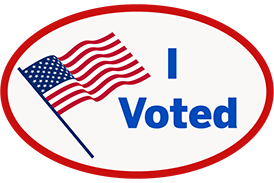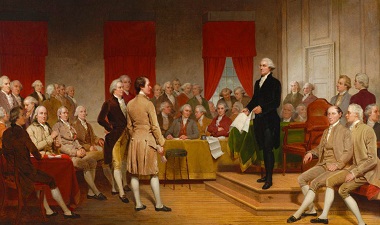
Getting Started
This module includes two Unboxing the Constitution Video (6 mins each), two Inside the Constitution video (6 mins each), student activities, and a learning project. Download the Teachers Guide and the Student Content Guide for more details on content and implementation. Course materials are provided in Google documents, Word documents, as well as printable PDFs.
A preview of the module can be accessed below.
Topics covered include:
- Slavery and citizenship
- Supreme Court cases involving the 14th Amendment
- Incorporation
- Enumerated and unenumerated rights

Vocabulary
At the beginning of each module, students are presented with vocabulary words and definitions.
Concept Words
Concept words are conceptually related to the big ideas in what they’re learning. These connect directly to the core concepts or themes of the lesson or unit and help students grasp the main ideas and how everything fits together.
- Black Codes: unfair laws passed in the Southern United States after the Civil War to limit the rights of freed African Americans
- citizenship: being a member of a country, which gives you rights (like voting) and responsibilities (like following laws)
- Due Process Clause: a part of the Constitution that says the government must treat people fairly and follow proper legal steps before taking away rights, freedom, or property
- enumerated rights: specific rights that are listed in the Constitution (like freedom of speech)
- unenumerated rights: rights not directly listed but still protected (like the right to travel between the states)
- Equal Protection Clause: a part of the 14th Amendment that says the government must provide everyone equal protection of the laws
- incorporation: a legal process that applies federal rights enshrined in the Bill of Rights to state laws through the 14th Amendment
- Jim Crow laws: unfair laws that enforced racial segregation (separating Black and white people) in the Southern U.S. after the Civil War
- natural rights: rights that are given by God or by nature and are fundamental to all humans
Speed Bump Words
Speed bump words are words that aren’t central to the concept being taught, but if students don’t understand them, they may struggle to comprehend the text or lesson. These words can help shape students' overall understanding of the topic.
- abridge: to shorten or limit something, like reducing someone’s rights or freedoms
- anarchy: a radical ideology based on the rejection of organized government
- construed: how something is understood or interpreted, especially laws or rules
- disparage: to speak badly about someone or something, making it seem less important
- infringe: to limit or break someone’s rights or freedoms
- interference: when someone or something gets in the way or interrupts a process or right
- liberty: freedom
- ratification: to officially approve

Topic 1: Understanding the 14th Amendment
During the Reconstruction period following the Civil War (1861-1865), the nation faced big questions, like:
- What did the Civil War really mean? How might we rebuild America on a firmer constitutional foundation?
- What does “freedom and equality” mean?
- Who should be a U.S. citizen?
- Who should have the right to vote?
- What role should the national government play in protecting people’s rights?
Questions like these led to the 14th Amendment, when the American people transformed the Constitution forever. This topic will help students explore the following key questions:
- How did the 14th Amendment change the Constitution? Why does it remain important today?
14.1: Activate Prior Knowledge
Students will brainstorm the 14th Amendment by creating mind maps for the words citizen, freedom, and equality.
Unboxing the Constitution - Video One
In this Unboxing the Constitution video, Lucy explores the foundations of the 14th Amendment, its connection to the Bill of Rights, and how it has impacted rights throughout history.
14.2: Federalism, Slavery, and the Question of Citizenship
Students will watch a video clip from FOURTEEN: The Black Codes and answer the following questions with a partner.
- What do you notice about Black Codes?
- What do you think was their purpose?
- Are there similarities between Black Codes in different states?
- What do you think was the effect of these Black Codes on Black people living in the southern states?
Support deeper learning by leading a class discussion about the student-created answers. Want more ideas about further engagement? Explore the Teachers Guide for Module 14.
FOURTEEN: The Black Codes
14.3: Understanding the 14th Amendment
Students will watch the Inside the Constitution videos and will refer to the Video Notes handout to organize the information that is shared.
Inside the Constitution Part I
Inside the Constitution Part II
Support deeper learning by setting up a jigsaw activity so students can become experts and teach others about the clauses in the 14th Amendment. There are five groups total, and one student from each group can rotate to teach their peers about their assigned clause. Check for understanding before the first rotation.
14.4: Closing Activity
Students will complete the Mid-Point Check-in.

Topic 2: The 14th Amendment and the States
The impacts of the 14th Amendment extended beyond the questions of the Reconstruction time period to include constitutional issues like incorporation and unenumerated rights. Students can explore those topics throughout history, looking at Supreme Court cases and legal precedent to begin thinking like a constitutional lawyer.
14.5: Tests of the 14th Amendment
Students will work collaboratively to decide constitutional questions in the Fourteenth Amendment Cases Activity.
Ensure that the students are making constitutional arguments, not policy arguments. A constitutional argument focuses on whether a law or action aligns with the principles and provisions of the Constitution. A policy argument addresses whether a law or action is desirable or effective based on its outcomes or societal impact.
Use the Review the Decisions handout to explore the outcome of the cases students decided in the Fourteenth Amendment Cases activity. This handout includes additional details like the relevant 14th Amendment clause and the key impact of the case.
14.6: Incorporation
In this activity, students will apply background knowledge about the Bill of Rights to complete the Selective Incorporation handout. Use this printable version of the Bill of Rights to reference while completing the activity.
Want ideas on how to support and scaffold student learning for this activity? Explore the Module 14 Teacher Guide here.
Watch this Unboxing the Constitution video for even more insight into Incorporation and enumerated rights.
14.7: Rights: Enumerated and Unenumerated
Students will explore the Glucksberg test and the debate connections to substantive due process.
Need suggestions on how to better support students in understanding this debate? Look through the Module 14 Teacher Guide.
14.8: Civic Connection: Know Your Rights
In this Civic Connection activity, students can deepen understanding about enumerated and unenumerated rights by exploring their student handbook and discussing what is not listed.
14.9: Reflect
To close out this module, students should revisit the Key Questions and Brainstorm the 14th handout. What are some words you would add or change in your map?

Learning Project
The 14th Amendment in 90 Seconds: Explaining Our Rights
In this activity, students will explore the impact of the 14th Amendment by creating short, engaging, explainer-style videos that cover key concepts, historical moments, and legal battles tied to this amendment.













